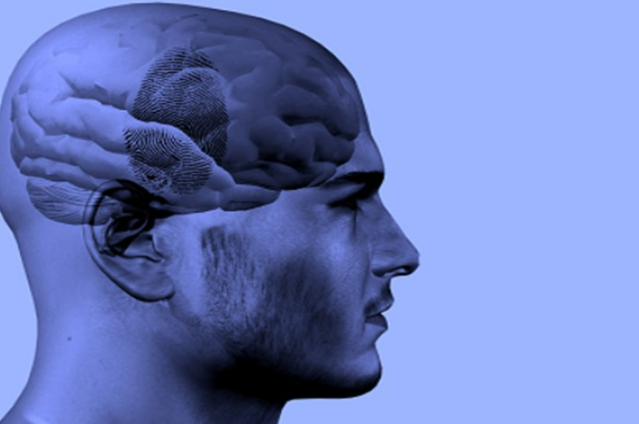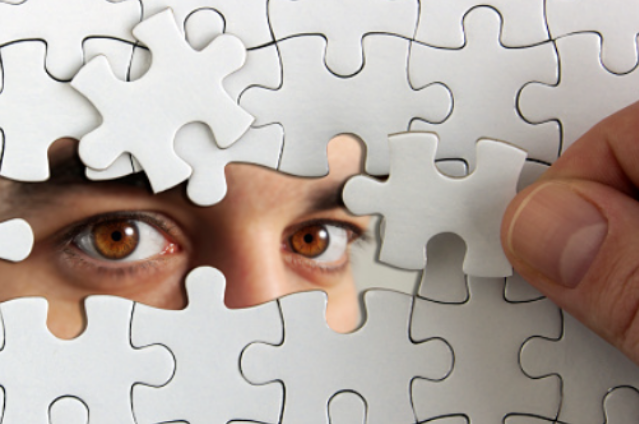
Introduction
It is said that nobody is born a criminal but circumstances make them the way they are. Though this statement is not totally wrong, but in order to reduce the amount of criminal behaviour we must understand how criminals think and why they commit such heinous crimes. A criminal mind is made up of many elements like patterns of thoughts, intentions, behaviour or response.
In today's world, with the increasing amount of criminal activities, its a difficult task to feel safe and secure at open roads, in alleys or even at home. Punishing criminals or by just enacting criminal laws would not help reduce the criminal cases in our society.On the other hand to reduce criminal cases we have to learn their mind structure,their intentions and also their behaviour. Juvenile Delinquency can be looked into the light of focus because it is a breeding ground for an adult crime.
What is Juvenile Delinquency?
Juvenile delinquency refers to the criminal activity of a child (below 16 years of age for boys and 18 years for girls) which violates the social laws and regulations. Juvenile delinquency is a gateway to adult crime. Many criminal careers have their roots in childhood causing serious problems all over the world.
Juvenile Justice (Care and protection of children) Act, 2000:

"The Act seeks to consolidate and modify the law relating to juveniles in conflict with the law and children in need of care and protection, by providing for proper care, protection and treatment by catering to their development needs, and by adopting a child-friendly approach in the adjudication and disposition of matters in the best interest of children."
We often see some people may become abusive because they were abused as children (the criminal mind grew out of environmental influences) while others might commit a crime because they are mentally ill (the biological Causes of a criminal mind structure) . Someone can have a perfectly good childhood, still ends up doing a criminal activity that goes against the norms of the society.
Adolescence is an age of vulnerability,so managing an adolescent child is the foremost important thing to focus on to lessen the amount of criminal behaviour. As the adolescent brain is still developing, the risks taking behaviour and mistakes done by young people may be more outside of their control than we think.On the outside, these offenders come in all shapes, sizes, colors and ages. But on the inside, research shows that they may share some traits which we will go through in this article.

Emergence of a criminal mind
Psycho-Social Cause:
Criminal activities provides immense satisfaction to the offenders and so they see nothing wrong in it. It is the child's rational choice ,its mind is structured in such a way that their moral values and ethics are inappropriate. For example, a terrorists morality permits him to kill an innocent person, because it's their believe that they are doing good by killing. Thus the child does any delinquent act because his mind tells him to do it, he does this because he wants to do it.
- Social Labeling - When society labels someone as a criminal it might provoke their desire to be one mainly shown out of aggression, like calling someone a failure may push one towards doing inappropriate behavior.
- Nuclear family - Emergence of Nuclear family system can be another cause where a child often feels neglected and isolated due to working parents who cannot give enough time for a child that leads a child to get involved in wrongful activities.
- Law - The Criminal's Substitute for Parents - The ordinary citizen is much less aware of the law, of its procedure or loopholes. Many citizens who are also terrified of the law but themajority treat it as they treated their parents, humor them or avoid them, criticize them occasionally, but appreciating their good points as well and most importantly not not taking them too seriously. The criminal fights the law because he over estimates it and wants to take revenge.
Psycho-Social Risk Factors:
- Antisocial attitudes, values, beliefs
- Association with peers with criminal background
- Negative parenting (e.g.,harsh and abusive discipline, poor parental supervision)
- Poor use of leisure time
- Abuse of drugs or alcohol
Environmental Cause:
- Lack of Family Affection - A child during its developmental years needs an adequate amount of love, care and affection more than anything else. Children who are neglected especially at their adolescence times are more prone to become criminals. When they do not get the love and affection they feel they deserved from the family, they become more angry and violent. They channelize this negative energy in committing crimes.
- Financial Hardship - Studies have proved that a criminal mind is also made because of the lack of adequate resources or basic necessities of life.Poverty turns an innocent kid into a violent criminal. While these children feel that they lack the resources which the richer children have,they feel injustice and look for the wrong ways to achieve the things that others have like theft and burglary. Teenagers usually start off with these small crimes to fulfill their daily expenses, but with the passage of time, they keep falling deeper and deeper into the life of crime.
- Peer Pressure - Peer pressure is yet another common reason behind an increase in the rate of criminal mind and behaviour. Through surveys conducted,it has been found that teen crimes showed greater amount of positive correlation between the teens who are friends with criminals and their more likely to end up becoming a criminal themselves.
Teenagers generally spend most of their time with their friends, so it is quite natural for them to become influenced by their friends. Juvenile delinquency is mostly a team game. Teens prefer committing crimes in the form of groups as it becomes exciting and also decreases their chances of getting caught.
- Bullying - Studies have proved that teenagers who bully others have a tendency to become criminals in later stages of their lives. Teenagers who show abusive behavior or remain in a company of friends who exhibit abusive behavior end up committing crimes themselves. The most important thing to note is the victims of bullying can also become criminal themselves just to take revenge from the society.
- Drug and Alcohol Abuse - Taking drugs or drinking alcohol as a minor is prohibited for children for some valid reason. As it also leads to various other crimes. Drug and alcohol abuse affect the entire cognitive structuring pattern of a teenage brain that affects judgment , decision making capacity and increases the probability of committing crimes. After getting drunk, their reasoning and judgment gets blurred leading them to become part of a crime that they never intended to commit in the first place.
Biological Cause:
For a very long time, it was believed that it is the brain that makes a criminal mind. So the brain is equally important to environmental factors in developing criminal mind.
- A study led by psychologist Dustin Pardini (Ph.D. from the University of Pittsburgh) reveals that Amygdala is implicated in acts of criminal behaviour. Amygdala is a part of the brain which is involved in fear, aggression and social interactions.
- His team found that 26-year-old men with lower amygdala volumes were found to be more than three times more aggressive, violent and showed psychopathic traits three years later than men of the same age with more normal-sized amygdala (Biological Psychiatry, 2013).
- A study led by Adrian Raine (Department of Criminology at the University of Pennsylvania and Yu Gao, Ph.D., of CUNY-Brooklyn) has revealed that amygdala deficits can be identified indirectly, in children as young as three years old but may predispose to crime at age 23 (The American Journal of Psychiatry, 2010).
For example they did a study where it was found that those children who went on to commit crimes at age 23 had "simply failed" to demonstrate fear conditioning during their 3 years old. They were fearless in conditions when most of us would be fearful.
- Kent Kiehl (Psychologist, Ph.D., and his colleagues at the University of New Mexico) discovered that another part of the brain, the anterior cingulate cortex (ACC), is alsolinked to crime. The ACC is involved in behavioral regulation and impulse control. Psychologists found that inmates with lower ACC levels are more likely to relapse into criminal acts after being released from prison than inmates with higher ACC activity.
Warning Signs of a Criminal Mind
Major childhood signs as the breeding ground for the criminal mind are:
- Violent anger outbursts, even with little to no provocation.
- Extreme mood swings can indicate a serious behavioral problem ( bad-tempered or violent at home and school )
- Fearlessness, even after knowing the consequence of wrongdoings, shows that they lack empathy, which makes them poorly connect with feelings and emotions of themselves and those of others.
- Extreme social isolation can be a risk factor of developing a criminal mind.The detachment can drive them to manipulate their peers and family or exhibit cruelty toward them.
Childhood delinquent disorder:
- Oppositional behavioral disorder Outbursts coming from being disobedient, can also be a sign of a behavioral problem called oppositional behavioral disorder.
- Conduct Disorder Behaviours may include cruelty to people or animals, truancy, frequent and severe temper tantrums, excessive fighting or bullying may develop conduct disorder.
Who Are Serial Killers?
Now let's look Into The Mind Of A Serial Killer:
Before the serial killer's criminal activities,he first selects the victim, then he dreams about killing which inspires him to conduct his first murder, following the murder, enjoys a period of relative peace. The killer again becomes ready to begin the destructive cycle and become a serial killer after committing the crime. During the time when they withdraw into a hidden world of dreams where they relives the murder that satisfy them, but his imagination becomes insufficient, and he feels the need to kill.
Some Real-life serial killers:
- Mohan Kumar, a primary school science teacher murdered 20 women over five years. His primary targets were women . Marriage, elopement, stealing their money and jewellery were all part of his plan after they were killed. After having sex he injected them with cyanide in the form of birth control pills.
- Mohinder Singh Pandher and his servant Surendra Kohli were arrested in Noida in 2006 because they murdered 38 children over two years, dismembering their bodies and dumping them in drains in and around their bungalow.
Intervention
Let's make a difference by changing brain to changing behaviour
- Teaching Life Enhancing Skills - Practice like self-regulation skills such as communication skills, decision-making, interpersonal relationship skills, self awareness building, empathy, coping with stress skills and how to survive in a tough environment and handle failures especially among childrens are more important to teach rather than how to achieve success.
- Learning good habits - In one intervention done by Raine and colleagues found that 3-year olds who had been assigned to an enrichment program focused on nutrition, exercise and cognitive skills had better brain functioning at age 11 and a 34 percent reduction in criminal activity at age 23 when compared with a control group that did not receive the intervention (American Journal of Psychiatry, 2003).
- Proper Guidance - Parental role helps protect their youngsters from engaging in risky and reckless behavior. A child who is at a stage of development where one is still immature parental guidance that may come from teachers, primary caregivers,other family members can help one to learn self-control.
- Exercise and yoga - In one study, prisoners assigned to a 10-week yoga class improved their impulse control (Journal of Psychiatric Research, 2013).
Social Initiatives
- Strict alcohol policies - According to the National Council on Alcoholism and Drug Dependence, alcohol is a major factor in 40 percent of violent crimes. Reducing the number of alcohol outlets, Revoking alcohol offenders' right to drink would help reduce crime cases.
- Community Police - Criminologist David Kennedy said in many cities, most crimes are driven in a very small subset of places , down on a street or isolated alleys. Deploying police (disguise) in these specific areas can have a big impact on fighting crime and violence.
Conclusion
Violent Crime is still prevalent worldwide. If these problems are not curbed soon then the growth of the children will be hampered giving a dark future to our country. Thus adequate training, education and guidance is required for the child in order to get a respectable place in the society which will motivate the child to inhibit criminal behaviour that goes against the norms of the society. All human beings have equal rights to live a life with dignity which will enrich our world with growth and preserve humanity.
. . .
Reference:
- David M. Day, Stephanie B. Marion. "Applying Social Psychology to the Criminal Justice System." Also Available at https://journals.sagepub.com
- Susan Young,Ben Greer, and Richard Church. "Juvenile delinquency, welfare, justice and therapeutic interventions: a global perspective." BJPsych Bull. 2017 Feb; 41(1): 21–29. Also Available at https://www.ncbi.nlm.nih.gov
- Dr. Adrian Raine's plenary address on this topic at APA's 2014 Annual Convention in Washington, D.C., Aug. 7–10, American Psychological Association. "The criminal mind." February 2014, Vol 45, No. 2. Also Available at www.apa.org
- Melitta Schmideberg. " Psychological Factors Underlying CriminalBehavior. " Journal of Criminal Law and Criminology(1947) Volume 37 | Issue 6. Also Available at https://scholarlycommons.law.northwestern.edu
- Nikita Das. "A Study Of Psychological Aspect In Crime"Legal Service India." Journal
- Also Available at scholarlycommons.law.northwestern.edu/jclc
